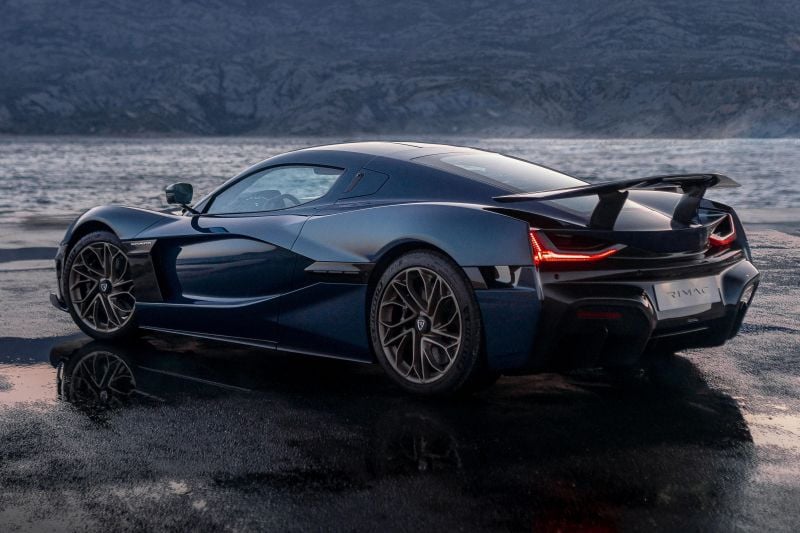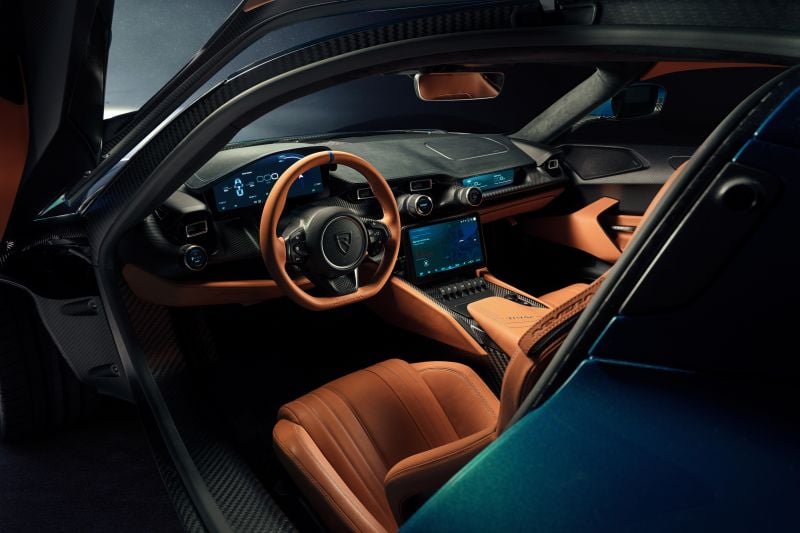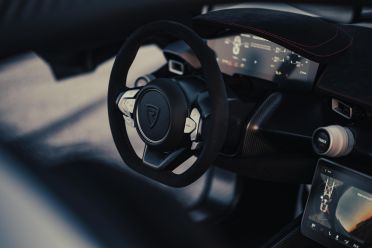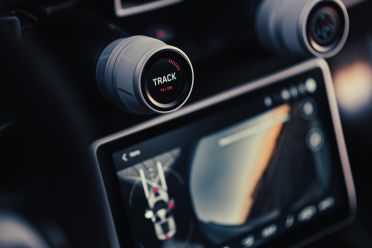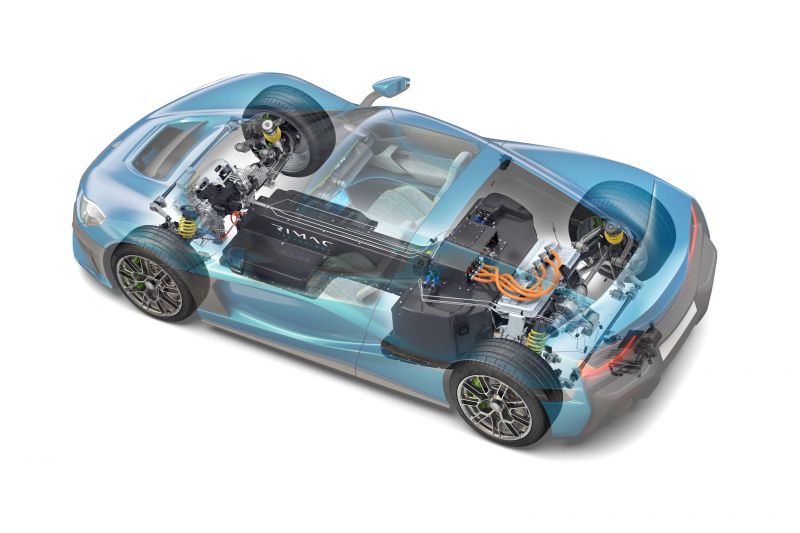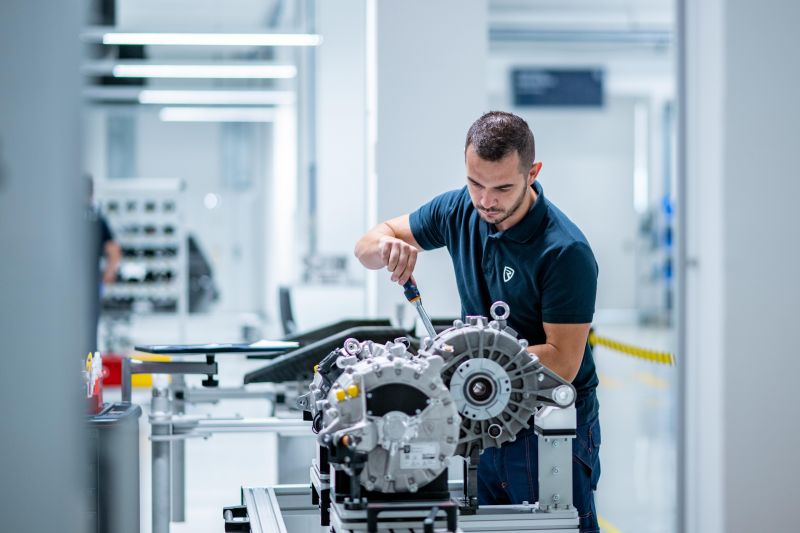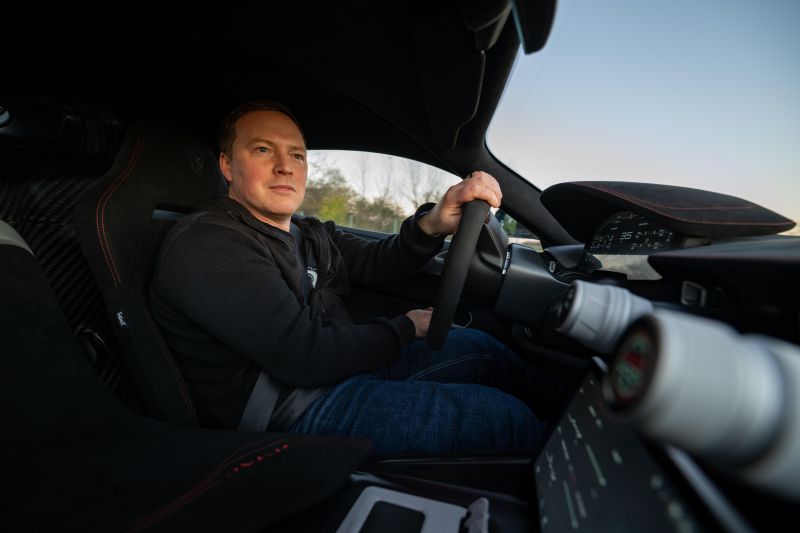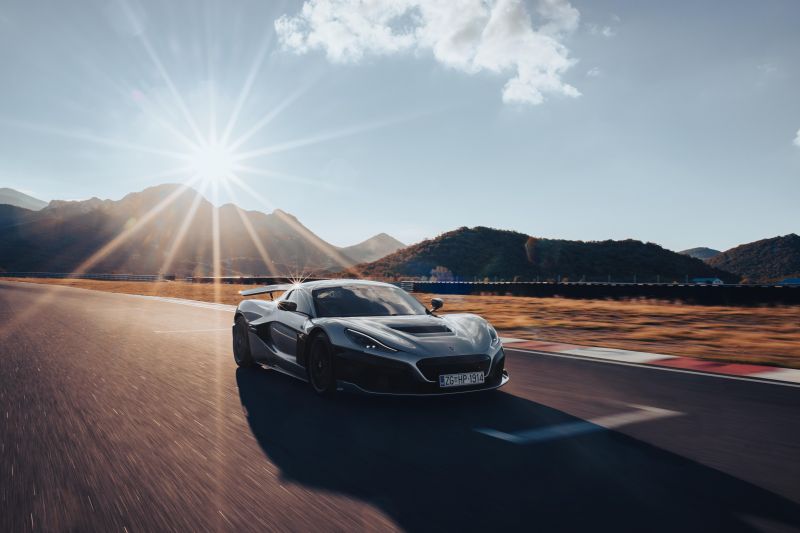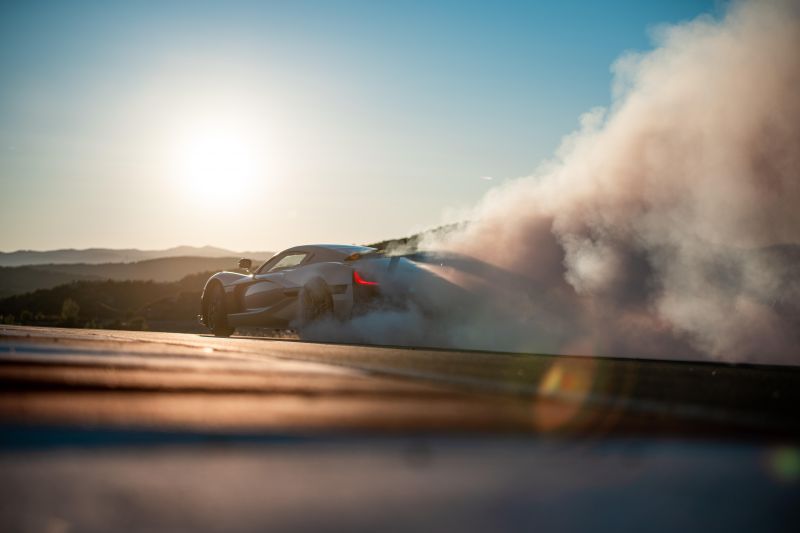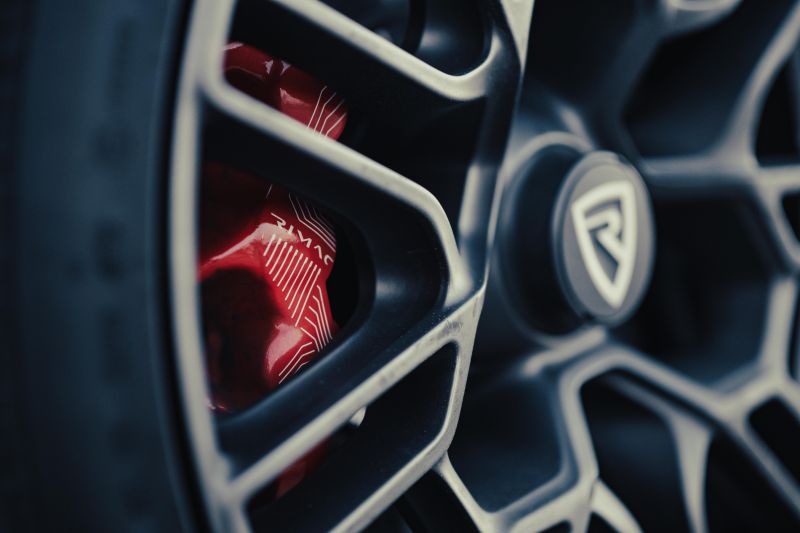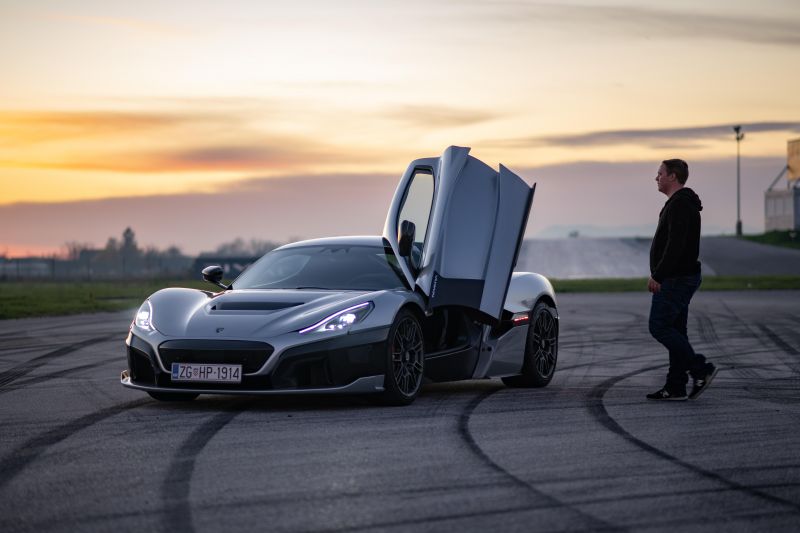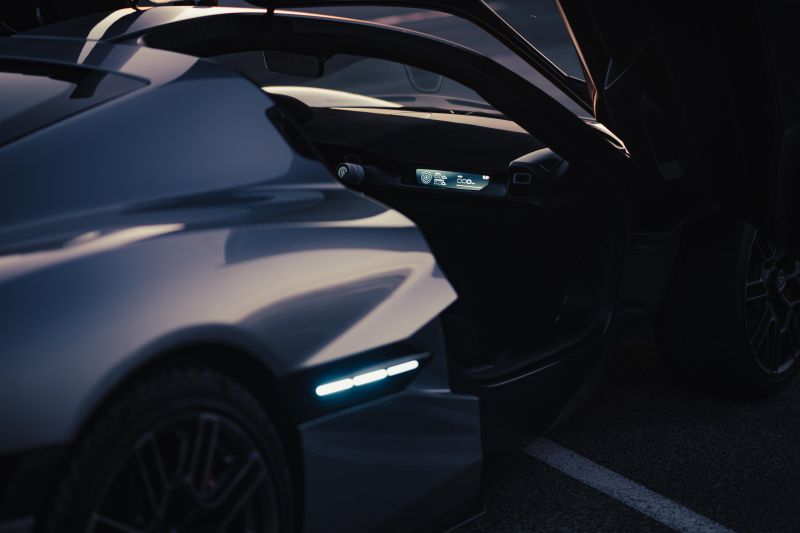The Nevera is Rimac’s first “series production” car, following on from the Croatian company’s first model, the Concept_One.
Though the latter was also an electric hypercar, the two models share nothing, as the Nevera was created from the ground up as a new car with almost every component developed in-house.
It features four electric motors, giving the carbon-tubbed coupe enough performance for Rimac to claim the Nevera is the fastest electric car in the world.
Only 150 examples of the Rimac will be made and there are still production slots available within that. To see what all the fuss is about, we travelled to Zagreb for a factory tour before taking the Nevera for a drive on road and track.
Rimac even let us use the insane Drift mode to melt a few tyres.
How much does the Rimac Nevera cost?
It ain’t cheap.
Pricing begins at €2 million ($3.16 million) in Europe. There are three standard trim levels to choose from: GT, Signature and Timeless.
Naturally, customers can choose to trim and equip the to their tastes as far their budgets will stretch.
All vehicles will be built in left-hand drive. As noted earlier, production is capped at 150 units worldwide.
What is the Rimac Nevera like on the inside?
As you’d hope from a crazy-expensive hypercar, even getting into the Nevera is an experience.
There’s a bespoke carbon-fibre tub underneath accommodating a large H-shaped battery pack, but Rimac has designed it all itself, so the battery is packaged to allow the driver and passenger sit low down in the car.
Despite that, and the ultra-low roof, entry and exit are made easy by butterfly doors that incorporate part of the roof and the side sills.
You sit in figure-hugging buckets seats made by Sabelt to Rimac’s specification, and the upholstery choice is up to you – though Mate Rimac; the company’s founder, would prefer if you chose one of the ‘vegan’ finishes.
Whichever takes your fancy, the Nevera’s cabin is festooned with bespoke switchgear – even the infotainment software is an in-house creation.
Below the central touchscreen is a bank of solid physical buttons, while Rimac is rightfully proud of its large protruding stalk controls that can be pushed, pulled or rotated to allow the driver to select from the myriad driving modes.
It’s a welcome analogue touch to what is undoubtedly a car of the digital generation.
We’re not so convinced by the steering wheel, however, which has Ferrari-like buttons for the indicators, but ahead of that is a fantastically sharp digital screen housing the customisable instrumentation.
What’s under the bonnet?
We’ve mentioned the H-shaped battery pack. That has a 120kWh capacity for a theoretical range of up to 480 kilometres between charges.
Rimac designed its own AC on-board charger, while also endowing the Nevera with DC charging capability of up to 500kW – i.e. faster than any Australian EV charger currently can manage.
Speaking of faster, the battery sends energy to four electric motors, two on the front and two on the back, all independently controlled.
Maximum power is quoted as 1408kW, backed up by 1740Nm of torque. Rimac had planned to use a two-speed transmission, a technique used on the Porsche Taycan, but instead designed its own motors and their operation to use single-speed gearboxes.
According to Rimac, the Nevera can hit 100km/h from rest in just 1.97 seconds, despite weighing 2150kg. It recently went on to top 412km/h to set a new world record for electric cars, though customer vehicles can only be driven at such speeds following special preparation by the factory to ensure that the tyres are in good condition etc.
Encouragingly, though, the launch control facility can be used at any time, without pre-warming the battery pack or anything – and well over 1000kW is still available even when the battery is at 30 per cent charge.
How does the Rimac Nevera drive?
Despite the headline-grabbing figures and the hypercar billing, Rimac is adamant that the Nevera has been developed to play the role of a GT car, too.
To convince us, the company let us drive the car on a busy highway, then a tight and twisty back road with a greasy surface, and finally through a small town before we arrived at a test track to really push the car to its limits.
Key to the Nevera’s wide breadth of capability is adaptive damping and active ride-height adjustment. However, there’s a big host of sub-systems that are tweaked according to the selected driving mode.
On the road, the driver chooses from Range (for maximum efficiency), Cruise for long-distance driving in comfort and Sport for a lot more focus and response.
There’s a tangible difference between the three, as the steer-by-wire and brake-by-wire systems, aerodynamics, ride height, damping, throttle response and the split of the torque front-to-rear are all adjusted – along with the proprietary torque vectoring system. All of these elements can be tweaked by the driver and saved in one of two custom modes, too.
The brakes feel a little odd at everyday traffic speeds, but the steering is alive and seemingly full of information. Though the Nevera feels a bit too wide for urban driving, visibility is good, so it endows the driver with confidence to use the car.
Out on faster, but damp, roads, that’s reinforced as a little slip of the rear is clearly communicated to the driver and easy to rectify.
Through all this, the Nevera’s performance is effortless, rather than dominating the experience. In its softest setting, the suspension is still firm, but the car moves with the surface, so it’s not uncomfortable on the highway.
It’s not what you’d call quiet, though. Rimac thankfully avoided the temptation to come up with its own synthetic noise signature, but the motors make a distinctive sound of their own, rising in pitch as you travel faster. It’s hugely different to an internal combustion engine’s note of course, but it’s exciting in its own way.
That excitement steps up a few rungs when we hit the circuit and try out the Track and Drift modes. The latter is just silly, making it laughably easy to melt away the tyres in a cloud of smoke should you have the space and inclination.
Interestingly, Rimac doesn’t just use the rear motors for this trick, but selectively sends energy to the front motors, too, allowing the driver look like drifting royalty without trying too hard at all.
The Nevera is even more impressive if you try to drive it quickly on track without the showboating. The torque vectoring system employs all four motors as need be to keep the car pointing in the direction the driver intended and yet, somehow, it still feels engaging and as if you’re part of the process.
It devours straights of any length in a laughably short amount of time, so it takes a few laps for your brain to catch up and realise that you need to start braking a little earlier. But the Nevera is also quite forgiving, and the brakes are excellent in this environment.
It’s an electric car you’ll want to use on a track, that’s for sure.
What do you get?
Aerodynamics
- Active elements
- Bonnet
- Front underbody flap
- Rear diffuser
- Rear wing
Chassis and structure
- Carbon-fibre monocoque
- Bonded carbon-fibre roof
- Carbon-fibre rear subframe
- Carbon-fibre, aluminium crash structures
- Electro-hydraulic brakes
- Brake-by-wire functionality
- Break-blending
- Pedal feel simulator
- 390mm 6-piston brakes (front and rear)
ADAS hardware
- 13 cameras
- 6 radars
- 12 ultrasonic sensors
Safety systems
- Dual front, side airbags
- Torque vectoring
- Traction control
- Stability control
Tyres
- Michelin Pilot Sport 4S
- 275/35 R20 front
- 315,35 R20 rear
CarExpert’s Take on the Rimac Nevera
While the Nevera undoubtedly lives up to its grown-up set of performance numbers, it’s even more special than they convey.
It’s one of the most high-tech cars in the world, built by a Croatian company that is fresh-faced and innovative. Sure, it’s hideously expensive, and there are a few quirks to get used to, but equally, there’s very little like it on the market.
Think of it as being part of this company’s glorious beginnings, and the price doesn’t seem so crazy in comparison to many old-school supercars on the market.
We have no doubt that Rimac has a bright future ahead of it – hopefully it’ll make its way to Australia eventually.
Click the images for the full gallery
MORE: Rimac Nevera revealed
MORE: Rimac Nevera becomes the world’s fastest EV





